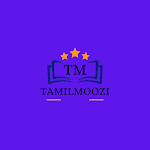Tamil Nadu showed the lead in resistingcolonial rule. As early as the late eighteenthcentury the Palayakarars, resisted theEnglish attempts to establish their politicalhegemony in Tamil Nadu. Even after thedefeat of the Palayakarars, an uprising wasorganised by Indian sepoys and officers inVellore Fort in 1806 that had its echoes inseveral cantonments in south India. Thanksto the introduction of Western educationand eventual emergence of educated Indian
middle class, the struggle against the Britishtook the constitutional path. The freedomstruggle in Tamil Nadu was unique, becausefrom the beginning it was not only a strugglefor independence from the English rule butalso a struggle for independence from socialdisability imposed by the obnoxious castesystem. In this lesson we shall study the roleplayed by nationalists wedded to diverse
ideologies in Tamil Nadu.
ideologies in Tamil Nadu.
The appointment of T. Muthuswami as thefirst Indian Judge of the Madras High Court in1877 created a furore in Madras Presidency. Theentire press in Madras criticized the appointmentof an Indian as a Judge. The press opposed hisappointment and the educated youth realizedthat the press was entirely owned by Europeans.The need for a newspaper to express the Indianperspective was keenly felt. G. Subramaniam,M. Veeraraghavachari and four other friends
together started a newspaper The Hindu in1878. It soon became the vehicle of nationalistpropaganda. G. Subramaniam also started aTamil nationalist periodical Swadesamitranin 1891 which became a daily in 1899. Thefounding of The Hindu and Swadesamitranprovided encouragement to the starting of othernative newspapers such as Indian Patriot, SouthIndian Mail, Madras Standard, Desabhimani,Vijaya, Suryodayam and India.
together started a newspaper The Hindu in1878. It soon became the vehicle of nationalistpropaganda. G. Subramaniam also started aTamil nationalist periodical Swadesamitranin 1891 which became a daily in 1899. Thefounding of The Hindu and Swadesamitranprovided encouragement to the starting of othernative newspapers such as Indian Patriot, SouthIndian Mail, Madras Standard, Desabhimani,Vijaya, Suryodayam and India.
Provincial associations such as the MadrasMahajana Sabha led to the formation of anall-India organisation, the Indian NationalCongress Leaders from different parts ofIndia attended several meetings before theformation of the Congress. One such meetingwas held in December 1884 in TheosophicalSociety at Adyar. It was attended by DadabhaiNaoroji, K.T. Telang, Surendranath Banerjeeand other prominent leaders apart from G.Subramaniam, Rangaiah and Anandacharlu
from Madras.The partition of Bengal (1905) led tothe Swadeshi Movement and changed thecourse of the struggle for freedom. In variousparts of India, especially Bengal, Punjab andMaharashtra popular leaders emerged. Theyimplemented the programme of the CalcuttaCongress which called upon the nation topromote Swadeshi enterprise, boycott foreigngoods and promote national education.
from Madras.The partition of Bengal (1905) led tothe Swadeshi Movement and changed thecourse of the struggle for freedom. In variousparts of India, especially Bengal, Punjab andMaharashtra popular leaders emerged. Theyimplemented the programme of the CalcuttaCongress which called upon the nation topromote Swadeshi enterprise, boycott foreigngoods and promote national education.
முதல் திருப்புதல் தேர்வு 2024 |பத்தாம் வகுப்பு|சமூகஅறிவியல்|வினாதாள்






0 கருத்துகள்